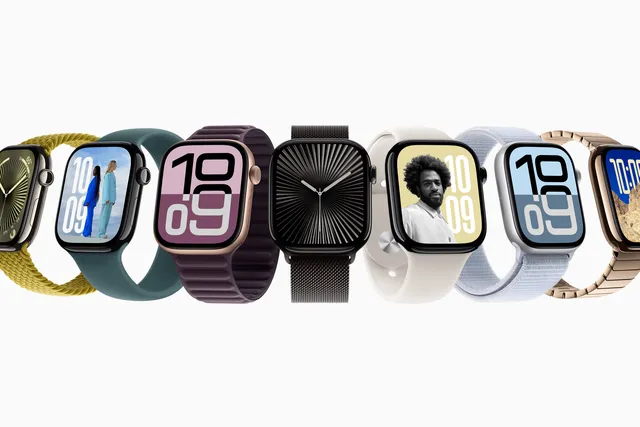With the introduction of the Apple Watch Series 10, along with the Ultra 2 and the second-generation SE, selecting the right Apple Watch has become more complex. Here’s a guide to help you navigate your options.
Editor’s Note: Due to a legal dispute with medical device company Masimo, new Apple Watch Series 9 and Ultra 2 models sold in the US starting January 18, 2024, will not include the blood oxygen feature. This does not affect older models or units sold internationally. To check if your device lacks this feature, look for a part number ending in LW/A.
Choosing an Apple Watch used to be straightforward—simply decide between the larger or smaller model. Over time, the options expanded to include cellular connectivity, the more budget-friendly SE (now in its second generation), and the rugged Apple Watch Ultra (also in its second generation). With the new Series 10 on the scene, older models are likely to be discounted, and refurbished units might become available. This could be a great opportunity to get a higher-end model at a reduced price, as the primary advancements in recent years have been incremental and software-based. However, note that watchOS 11 will no longer support Series 4, Series 5, and first-generation SE when it releases this fall.
For those interested in maintaining the blood oxygen feature, consider buying refurbished models, as new Series 9 and Ultra 2 units sold in the US after January 18, 2024, will not have this capability. Older models and units sold before this date, as well as those available outside the US, still include it.
We’re currently evaluating the new Series 10. While our full review is pending, initial impressions suggest that the Series 10 is larger, lighter, and brighter than previous models, with new features inspired by the Ultra line and a forthcoming sleep apnea detection feature, subject to FDA approval. The Series 10 also introduces new color options and replaces stainless steel with titanium.
With so many choices, it can be overwhelming. Fortunately, I’ve tested every current Apple Watch model and many other fitness and smartwatches. Here’s a breakdown to help you decide.
The Apple Watch is the top choice for iPhone users, offering unparalleled integration with Apple’s ecosystem, superior productivity features, and a robust third-party app library. Although other smartwatches might be better suited for serious athletes, the Apple Watch excels in connectivity, smart home control, and overall functionality.
Wearables are highly personal, so comfort is crucial. Before deciding which model to purchase, make sure to choose a size and strap that suits your wrist.
The SE and Series watches come in two sizes each: the SE in 40mm and 44mm, and the Series 7, 8, and 9 in 41mm and 45mm. The Series 10 increases this to 42mm and 46mm. Larger sizes offer better readability, while smaller sizes are more comfortable for petite wrists. The SE and Series models feature aluminum cases, but the Series models also offer titanium options. If you’re prone to accidents or are very active, you might prefer the durability of stainless steel or titanium, though these options cost more.
For straps, the nylon sport loop is recommended for its breathability, comfort, and ease of use. For more stylish or affordable options, consider third-party vendors like Amazon or Etsy. Note that Apple has discontinued leather accessories in favor of the FineWoven material, which has received mixed reviews. It’s best to check it out in person at an Apple Store before purchasing.
The Ultra and Ultra 2 come only in a 49mm size with titanium cases and include specialized straps like the trail loop, alpine loop, and ocean loop. Each strap is designed for different activities, with the trail loop being the most versatile and lightweight. These straps are compatible with 44mm and 45mm Series watches, and vice versa.
While we’ll reserve our final judgment on the Series 10 until our review is complete, it’s worth noting that the Series 9 and Ultra 2 feature the S9 processor, improved screen brightness, and the new double-tap gesture. They also include Apple’s second-gen ultrawide band chip, though this requires an iPhone 15 for full functionality.
For those new to smartwatches or younger buyers, the second-gen Apple Watch SE is a great choice. If you’re upgrading from an older model and want features like an always-on display or advanced health tracking, consider the Series 9. For the largest display, best durability, and top-tier fitness features, the Ultra 2 is the way to go.
The Series 9 starts at $399 for the 41mm model and $429 for the 45mm, with an additional $100 for LTE connectivity, plus carrier fees. The second-gen SE begins at $249 for the 40mm model and $279 for the 44mm. Cellular versions are available, with LTE adding $50 plus carrier costs.
If you’re young and healthy, you might not miss the EKG or SpO2 features, especially since new US models have the SpO2 feature disabled. The SE’s heart rate sensor still provides useful alerts. The EKG sensor, primarily for detecting atrial fibrillation, may be less critical if you’re healthy and free of risk factors. The SE offers a great health tracking experience for a more budget-friendly price, making it a solid choice for many buyers.

